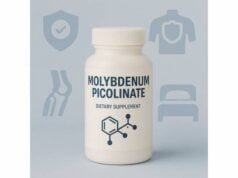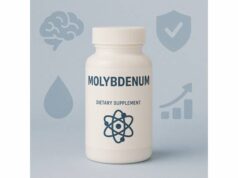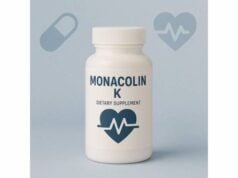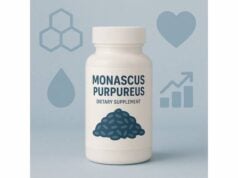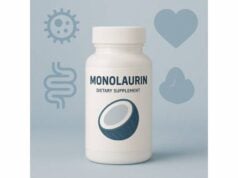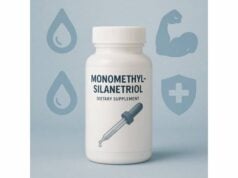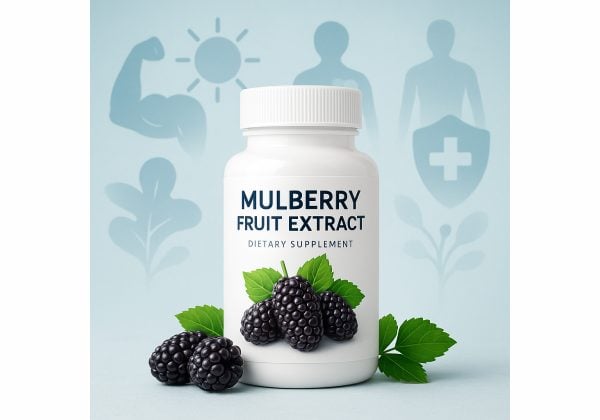
Mulberry fruit extract comes from the ripe berries of Morus species—most often white mulberry (Morus alba). Beyond their mild, sweet-tart flavor, mulberries are packed with polyphenols (notably anthocyanins such as cyanidin-3-glucoside) that act on enzymes involved in carbohydrate digestion. In controlled trials, adding a small dose of mulberry fruit extract to a high-carbohydrate meal has reduced post-meal glucose and insulin spikes. People also take it hoping to support healthy lipids and oxidative balance, though human evidence there is thinner. If you’re comparing it to the better-known mulberry leaf, keep in mind leaf extracts are standardized to DNJ (1-deoxynojirimycin), while fruit extracts are typically standardized to polyphenols and anthocyanins; they work through similar enzyme targets, but they’re not the same product. This guide distills what the research shows, how to use mulberry fruit extract correctly, where results vary, and who should avoid it. You’ll find practical, dosage-ready advice along with safety guardrails grounded in recent studies.
Quick Overview
- Consistent benefit: 370–750 mg with a starchy meal can blunt post-meal glucose by about 10–25% in trials.
- Mechanism: polyphenols (anthocyanins) inhibit carbohydrate-digesting enzymes and smooth glucose peaks.
- Suggested use: 370–750 mg taken with the first bites of a 50 g-carbohydrate meal; up to 1,500 mg for larger loads.
- Safety: generally well tolerated; mild gas or bloating possible, especially at higher intakes.
- Avoid or use only with medical guidance if you are pregnant or breastfeeding, have diabetes treated with medication, have kidney disease, or plan surgery.
Table of Contents
- What is mulberry fruit extract?
- Does it work for blood sugar?
- How to take it correctly
- Variables that change results
- Common mistakes and troubleshooting
- Safety, side effects, who should avoid it
What is mulberry fruit extract?
Mulberry fruit extract (MFE) is a concentrated preparation made from the ripe fruits of Morus species, most commonly Morus alba. Manufacturers typically use water or hydroalcoholic extraction to draw out bioactive compounds, then dry the extract into a powder for capsules, sachets, or functional foods. Unlike mulberry leaf extracts—best known for the iminosugar DNJ—mulberry fruit concentrates are characterized by their polyphenol content, especially anthocyanins (the pigments that give red, purple, and black mulberries their color). These anthocyanins, along with related flavonoids (e.g., rutin) and stilbenoids (e.g., oxyresveratrol glycosides such as mulberroside A), contribute to antioxidant capacity and, importantly, to the modulation of carbohydrate digestion.
Why does this matter for blood sugar? When you eat starches and sugars, enzymes in your small intestine—primarily alpha-amylase and alpha-glucosidase—break those carbohydrates down into absorbable glucose. In vitro and human feeding studies suggest mulberry polyphenols partially inhibit these enzymes, slowing the rate of carbohydrate breakdown. The result is a smaller and smoother “spike” in post-prandial (post-meal) glucose and insulin. The mechanism is conceptually similar to prescription alpha-glucosidase inhibitors (like acarbose), but mulberry fruit extract is a dietary ingredient with milder effects and a different composition.
Beyond blood sugar, mulberry fruit has been investigated for lipid metabolism, oxidative stress, and liver health. The fruit’s anthocyanins and other polyphenols can scavenge free radicals and may improve certain oxidative biomarkers in preclinical models. Small human studies and reviews have proposed benefits for cholesterol profiles and inflammatory markers, but the clinical evidence here is preliminary compared with the consistent post-meal glucose findings.
It’s also important to distinguish between whole fruit and extracts. Whole mulberries are nutritious—providing vitamin C, fiber, and polyphenols—but they also contain intrinsic sugars. Extracts deliver a concentrated dose of specific compounds without the same sugar load, and trials demonstrating blunted glucose spikes have dosed purified extract alongside a separate carbohydrate source (e.g., rice, sucrose, maltodextrin). For shoppers, labels vary: some products report “standardized to ≥ X% polyphenols” or “≥ X mg anthocyanins per serving.” Others simply list “mulberry fruit extract” with a milligram amount. If you want a result tied to clinical data, choose a product and dose that match those trials as closely as possible.
Finally, color indicates composition: darker mulberries (deep red to purple-black) contain more anthocyanins than white mulberries. Extracts derived from darker fruit often have higher anthocyanin content, which may translate to stronger alpha-glucosidase inhibition per milligram. However, because brands and standardizations differ, the most practical guide is the dose range repeatedly tested in humans with real meals, covered next.
Does it work for blood sugar?
Short answer: yes—when used with a carbohydrate-rich meal, mulberry fruit extract has repeatedly reduced post-meal glucose and insulin excursions in controlled human trials. The strongest and most consistent signal comes from studies that add a measured dose of extract to meals supplying about 50 g of available carbohydrate (for example, cooked rice). Effects are acute (visible within that meal) and dose-responsive.
What kind of reductions can you realistically expect? In a dose-response trial in healthy adults, adding 0.37–1.5 g of a specified mulberry fruit extract to 50 g-carbohydrate meals reduced the 2-hour post-meal glucose area-under-the-curve by roughly 20–27%, with parallel reductions in insulin of about 14–35%. This means the meal’s “glucose spike” was smaller, and insulin demand was lower, compared with the same meal without extract. Another randomized crossover study using 0.37 g of the same extract showed a mean ~11% reduction in post-meal glucose across a range of rice varieties and a ~10% reduction in insulin, demonstrating that the effect generalizes across different starch characteristics. These changes are clinically meaningful in the context of everyday eating, where repeated daily spikes contribute to glycemic load and cardiometabolic stress.
What about people with type 2 diabetes? A randomized pilot trial in adults with type 2 diabetes tested low doses of mulberry fruit extract (0.37 g and 0.75 g) with a ~50 g carbohydrate rice meal. The higher dose (0.75 g) produced a clear reduction in 2-hour post-meal glucose (~22%) and insulin (~18%), while the 0.37 g dose showed a smaller, more variable effect. Importantly, participants were unmedicated (not taking glucose-lowering drugs), so the results reflect the extract’s direct meal-level impact without medication confounders.
Mechanistically, the fruit’s polyphenols (especially anthocyanins) appear to inhibit alpha-glucosidase and related enzymes. By slowing carbohydrate breakdown at the brush border, less glucose floods the bloodstream at once, flattening the curve. Because this mechanism is localized to the gut and specific to the meal, mulberry fruit extract shines as an “occasion-based” tool: it won’t dramatically change fasting glucose or HbA1c by itself, but it can help smooth the largest daily glucose swings when used with high-starch meals.
How does it compare to mulberry leaf? Leaf extracts, standardized to DNJ, also inhibit carbohydrate-digesting enzymes and have a larger evidence base for glycemic endpoints. Fruit extract isn’t a substitute for diabetes treatment, but the human trials on fruit are consistent, practical, and relevant to day-to-day eating. If you’re choosing between them, consider tolerability, standardization, and personal preference (some prefer berry-derived polyphenols). For people already taking alpha-glucosidase-inhibiting medications (e.g., acarbose), stacking mulberry extracts may be redundant and could increase gastrointestinal side effects—ask your clinician before combining.
Bottom line: if your goal is to tame post-meal spikes from rice, pasta, potatoes, bread, or sweets, mulberry fruit extract used at the right time and dose is one of the better-supported berry-based strategies.
How to take it correctly
Who benefits most: People who routinely eat starchy meals (rice, noodles, pasta, bread, potatoes), those with prediabetes, individuals aiming to reduce glycemic variability, or anyone who notices post-meal energy crashes.
Timing: Take mulberry fruit extract with the first bites of your carbohydrate-rich meal. Because the mechanism is enzyme inhibition in the small intestine, timing matters—adding it after you finish the meal blunts much less of the glucose rise.
Dosage:
- Standard meal (≈50 g carbohydrate): 370–750 mg (0.37–0.75 g) with the meal.
- Large carbohydrate load (≥75 g): up to 1,500 mg (1.5 g) has been used in trials with stronger effects, but more isn’t always better for comfort.
- Start low: begin at 370 mg and assess tolerance for a few meals; increase toward 750 mg if you still see high spikes on a glucose meter or feel the usual post-meal slump.
Form matters: Use a mulberry fruit extract (Morus alba fruit), not leaf. Labels can be confusing; look for “fruit” or “berry” and avoid products standardized to DNJ (those are leaf-based). If a product lists “anthocyanins” or “polyphenols” content, that’s a good sign of fruit sourcing.
How to pair with meals:
- Rice, pasta, bread: take the extract at the first bites; consider adding non-starchy vegetables and protein to further slow absorption.
- Sweet desserts or sugary drinks: mulberry extract can blunt the glucose rise, but combining with fiber (chia, psyllium) and portion control works better than relying on extract alone.
- Mixed meals: if a meal has little starch (e.g., salad + protein), you probably don’t need it.
Practical routine (example):
- Identify meals with ≥40–50 g carbohydrate (label, recipe, or app).
- Take 370 mg of mulberry fruit extract with the first couple of bites.
- If you wear a CGM or fingerstick, note the 1–2 hour peak for that meal on a few occasions.
- If peaks remain high, increase to 750 mg for similar meals.
- Reserve 1,500 mg for rare, unusually high-carb meals you can’t otherwise balance.
Stacking tips (optional):
- Pre-meal salad or protein 10–15 minutes before starch can amplify the effect.
- Acids (lemon juice or vinegar with the meal) may modestly lower glycemic response; if you’re sensitive to reflux, skip.
- Fiber (vegetables, legumes) consistently improves results.
What not to do:
- Don’t substitute extract for prescribed diabetes therapy.
- Don’t expect fasting glucose or HbA1c to fall without broader dietary changes—mulberry fruit extract is a meal-level tool.
- Don’t confuse fruit extract with leaf extract; results and dosing differ.
When to reassess: If you change weight, medications, or dietary pattern (e.g., move to a lower-carb diet), retest your need and dose.
Variables that change results
1) Carbohydrate amount and type
The most reliable benefits appear when meals contain around 50 g of available carbohydrate. Heavier starch loads amplify the relative effect up to a point, but absolute glucose exposure will still be higher than with smaller portions. Starch structure also matters: amylose-to-amylopectin ratios, gelatinization (how you cook rice/pasta), and retrogradation (cooling and reheating) change digestibility. Trials show mulberry fruit extract reduces glucose and insulin rises across different rice varieties, but the magnitude varies by the starch’s inherent glycemic properties.
2) Dose of extract
There’s a dose-response curve: as you increase from ~0.37 g toward ~1.5 g, the reduction in post-meal glucose typically grows, but returns diminish and gastrointestinal side effects (gas, bloating) may appear at the top end. The sweet spot for most people and meals is 370–750 mg. If your meal is only 25–30 g carbohydrate, you may not need it—or a smaller dose may suffice.
3) Meal composition and order
Protein, fat, and fiber slow gastric emptying and carbohydrate absorption, improving glycemic responses. If you eat your vegetables or protein first, then starch, you’ll usually see a lower peak—mulberry fruit extract adds to that effect. Conversely, washing down starch with sweetened drinks can erode benefits.
4) Individual factors
- Glucose tolerance: People with higher baseline post-prandial responses often see more obvious benefit, especially at 0.75–1.5 g doses.
- Body size: Larger individuals may need the higher end of the range for the same meal.
- Gut comfort: Some people are sensitive to polyphenol-rich extracts. If you notice bloating, step down the dose, spread carbohydrate across the meal, and ensure adequate hydration.
- Medications: If you take drugs that blunt carbohydrate absorption (e.g., acarbose) or lower glucose (e.g., insulin, sulfonylureas), you could see additive effects—coordinate dosing with your clinician.
5) Product variability
Standardization varies: some extracts specify anthocyanin content, others only total polyphenols, and some list no standardization at all. Color, smell, and taste can hint at polyphenol richness, but aren’t reliable. Where possible, choose brands that:
- disclose source (fruit, Morus alba) and standardization,
- provide lot testing for identity and purity,
- and offer serving sizes aligning with human trials (e.g., 370–750 mg per serving).
6) Preparation method
Most trials mixed extract into the starchy food or took it with the first bites. If you swallow a capsule well before or long after the meal, the timing may miss the enzyme-substrate interaction window. Taking the extract with food is best.
7) Lifestyle context
Better sleep, movement (a 10–15 minute post-meal walk), and overall diet quality lower glycemic variability. Mulberry fruit extract performs best on top of those habits, not instead of them.
Key takeaway: The extract’s effect is dependable but not magical. Match the dose to meal size, ingest it with the first bites, and shape your meal composition for compounding gains. If you measure, you’ll see the pattern.
Common mistakes and troubleshooting
Mistake 1: Using the wrong product
People often buy mulberry leaf by accident. Leaf products are fine for some goals but differ in actives and dosing. Check that your label says fruit (berry) and that it lists Morus alba fruit extract.
Mistake 2: Taking it at the wrong time
Swallowing a capsule after you’ve finished the meal—or 30 minutes before—blunts the benefit. Take it with the first bites of starch, or mix a measured powder into the starchy dish.
Mistake 3: Expecting fasting numbers to change
Mulberry fruit extract is meal-targeted. Don’t expect dramatic shifts in fasting glucose or HbA1c from the extract alone. If those are your targets, work on overall diet, movement, weight management, sleep, and medications under medical care.
Mistake 4: Under-dosing large meals
A small 370 mg dose with 100 g of carbohydrate won’t perform like 750–1,500 mg. Scale dose with meal size, and prioritize the starchiest meals (e.g., rice bowls, pasta dinners).
Mistake 5: Over-reliance without diet basics
If you’re consistently relying on extract to process high-sugar snacks or large refined-carb portions, you’ll hit diminishing returns. Use mulberry fruit extract as a tool, not a license.
Troubleshooting tips
- Still spiking? Verify the carbohydrate estimate; try 750 mg at the next similar meal; add a pre-meal salad or 10–15 minute walk post-meal.
- GI discomfort (gas, bloating): Lower the dose; take with plenty of water; pair with fiber-rich foods; avoid stacking with other strong enzyme-inhibiting supplements at the same meal.
- On glucose-lowering meds: Monitor pre- and post-meal readings more closely when you first add mulberry fruit extract; discuss with your clinician, especially if you use insulin or sulfonylureas.
- Not sure it’s doing anything? Test with and without mulberry fruit extract on identical meals a week apart and compare 1–2 hour peaks.
Quality checklist before you buy
- “Morus alba fruit extract” on the label (not leaf).
- Serving size options near 370–750 mg.
- Disclosure of polyphenol/anthocyanin content or evidence of third-party testing.
- Clear lot number and contactable manufacturer.
When to stop or seek advice
- New or worsening hypoglycemia symptoms (shaking, sweating, confusion).
- Persistent GI issues despite dose adjustment.
- Starting, stopping, or changing diabetes medications—reassess with your healthcare provider.
Safety, side effects, who should avoid it
Overall safety profile
In human feeding studies with healthy adults and with unmedicated individuals with type 2 diabetes, mulberry fruit extract doses between 0.37 and 1.5 g taken with carbohydrate meals have been well tolerated, with low rates of mild gastrointestinal complaints (gas, bloating). Preclinical safety work on fruit extracts—including a 90-day rat study using very high doses—has not revealed organ toxicity at levels far above typical human intakes. Notably, at extreme doses, animals showed urine and feces discoloration and pigment accumulation in renal tubular cells; these changes reflected excretion of fruit pigments and occurred at doses magnitudes higher than human servings.
Possible side effects (usually dose-related):
- Bloating, gas, abdominal discomfort.
- Changes in stool color (harmless, from pigments).
- Rarely, loose stools with high doses or when combined with other carb-blocking supplements.
Drug and disease interactions:
- Diabetes medications (insulin, sulfonylureas): Mulberry fruit extract reduces post-meal glucose; using it on top of glucose-lowering drugs can increase the risk of hypoglycemia. Coordinate with your clinician and monitor closely when you start or change dose.
- Alpha-glucosidase inhibitors (acarbose, miglitol, voglibose): Mechanistic overlap may increase GI side effects without much added benefit.
- Kidney disease: Although human data are limited, very high doses in animals deposited pigments in renal tubules; people with advanced CKD should avoid or use only under medical supervision.
- Surgery: Stop 2 weeks before planned procedures due to potential interactions with perioperative glucose management.
Special populations:
- Pregnancy and breastfeeding: Human safety data are insufficient. Because the extract modifies carbohydrate absorption and may influence infant feeding patterns through milk composition, avoid unless your obstetric clinician recommends it.
- Children: Not enough research to guide routine use; prioritize dietary approaches.
- Allergies: Mulberry belongs to the Moraceae family. Anyone with known allergies to mulberry or related fruits should avoid.
Quality and contamination concerns:
Choose reputable brands with third-party testing. Avoid products that do not specify plant part (fruit) or that bundle multiple stimulants or undeclared actives. If you experience unusual symptoms (palpitations, dizziness), stop immediately and contact a healthcare professional.
Practical risk-reduction checklist:
- Match dose to meal size; start at 370 mg.
- Avoid stacking with carb-blocking meds/supplements until you’ve discussed with a clinician.
- Monitor glucose more closely during the first week of use, especially if you have diabetes.
- Hydrate and pair with whole foods to improve tolerance.
Bottom line: For most healthy adults, mulberry fruit extract used with carbohydrate-heavy meals is low-risk and can be part of a broader glucose-management strategy. People on glucose-lowering medications, those with kidney disease, and anyone pregnant or breastfeeding should use caution and seek medical guidance first.
References
- Effect of Low-Dose Mulberry Fruit Extract on Postprandial Glucose and Insulin Responses: A Randomized Pilot Trial in Individuals with Type 2 Diabetes — 2024 (RCT)
- Dose-response efficacy of mulberry fruit extract for reducing post-prandial blood glucose and insulin responses: randomised trial evidence in healthy adults — 2023 (RCT)
- Effect of mulberry fruit extract on post-prandial glycaemic and insulinemic responses to different rice types: a randomised trial in healthy adults — 2023 (RCT)
- A 90-day Sub-chronic Oral Toxicity Assessment of Mulberry Extract in Sprague Dawley Rats — 2021 (Toxicology)
- Effects of Mulberry Fruit (Morus alba L.) Consumption on Health Outcomes: A Mini-Review — 2018 (Systematic Review)
Disclaimer
This guide is for educational purposes and is not a substitute for professional medical advice, diagnosis, or treatment. Mulberry fruit extract is not intended to diagnose, treat, cure, or prevent any disease. Always talk with your healthcare provider before starting any supplement, especially if you have a medical condition, take prescription medications, are pregnant or breastfeeding, or are planning surgery. If you experience concerning symptoms, stop use and seek medical care.
If you found this helpful, consider sharing it with a friend or on Facebook or X (formerly Twitter), and follow us on your preferred social platforms. Your support helps us keep creating clear, evidence-based guides. Thank you.

